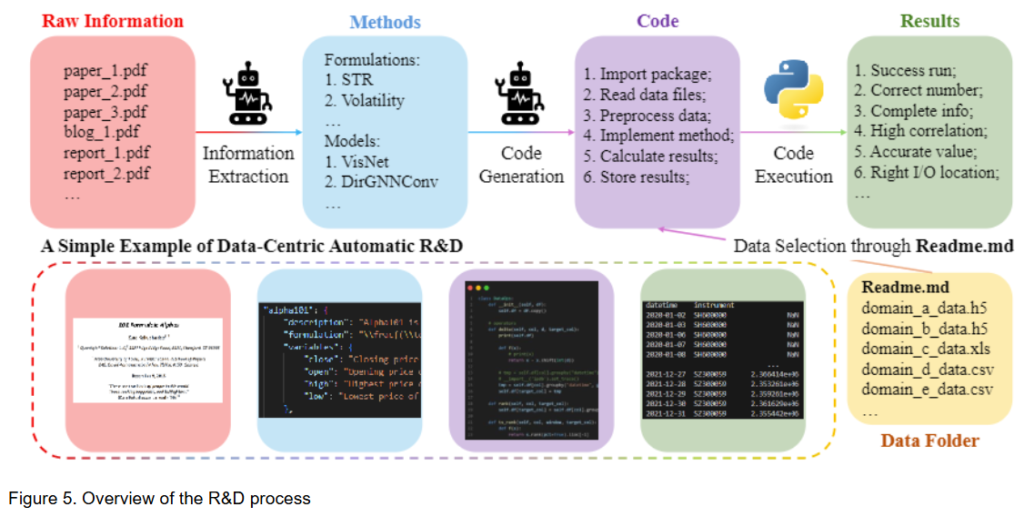Research and development (R&D) is crucial in driving productivity, particularly in the AI era. However, conventional automation methods in R&D often lack the intelligence to handle complex research challenges and innovation-driven tasks, making them less effective than human experts. Conversely, researchers leverage deep domain knowledge to generate ideas, test hypotheses, and refine processes through iterative experimentation. The rise of LLMs offers a potential solution by introducing advanced reasoning and decision-making capabilities, allowing them to function as intelligent agents that enhance efficiency in data-driven R&D workflows.
Despite their potential, LLMs must overcome key challenges to deliver meaningful industrial impact in R&D. A major limitation is their inability to evolve beyond their initial training, restricting their capacity to adapt to emerging developments. Additionally, while LLMs possess broad general knowledge, they often lack the depth required for specialized domains, limiting their effectiveness in solving industry-specific problems. To maximize their impact, LLMs must continuously acquire specialized knowledge through practical industry applications, ensuring they remain relevant and capable of addressing complex R&D challenges.
Researchers at Microsoft Research Asia have developed RD-Agent, an AI-powered tool designed to automate R&D processes using LLMs. RD-Agent operates through an autonomous framework with two key components: Research, which generates and explores new ideas, and Development, which implements them. The system continuously improves through iterative refinement. RD-Agent functions as both a research assistant and a data-mining agent, automating tasks like reading papers, identifying financial and healthcare data patterns, and optimizing feature engineering. Now open-source on GitHub, RD-Agent is actively evolving to support more applications and enhance industry productivity.
In R&D, two primary challenges must be addressed: enabling continuous learning and acquiring specialized knowledge. Traditional LLMs, once trained, struggle to expand their expertise, limiting their ability to tackle industry-specific problems. To overcome this, RD-Agent employs a dynamic learning framework that integrates real-world feedback, allowing it to refine hypotheses and accumulate domain knowledge over time. RD-Agent continuously proposes, tests, and improves ideas by automating the research process, linking scientific exploration with real-world validation. This iterative feedback loop ensures that knowledge is systematically acquired and applied like human experts refine their understanding through experience.
In the development phase, RD-Agent enhances efficiency by prioritizing tasks and optimizing execution strategies through Co-STEER, a data-driven approach that evolves via continuous learning. This system begins with simple tasks and refines its development methods based on real-world feedback. To evaluate R&D capabilities, researchers have introduced RD2Bench, a benchmarking system that assesses LLM agents on model and data development tasks. Looking ahead, automating feedback comprehension, task scheduling, and cross-domain knowledge transfer remains a major challenge. By integrating research and development processes through continuous feedback, RD-Agent aims to revolutionize automated R&D, boosting innovation and efficiency across disciplines.
In conclusion, RD-Agent is an open-source AI-driven framework designed to automate and enhance R&D processes. It integrates two core components—Research for idea generation and development for implementation—to ensure continuous improvement through iterative feedback. By incorporating real-world data, RD-Agent evolves dynamically and acquires specialized knowledge. The system employs Co-STEER, a data-centric approach, and RD2Bench, a benchmarking tool, to refine development strategies and evaluate AI-driven R&D capabilities. This integrated approach enhances innovation, fosters cross-domain knowledge transfer, and improves efficiency, marking a significant step toward intelligent and automated research and development.
Check out the Paper and GitHub Page. All credit for this research goes to the researchers of this project. Also, feel free to follow us on Twitter and don’t forget to join our 85k+ ML SubReddit.
The post Microsoft AI Releases RD-Agent: An AI-Driven Tool for Performing R&D with LLM-based Agents appeared first on MarkTechPost.
Source: Read MoreÂ

